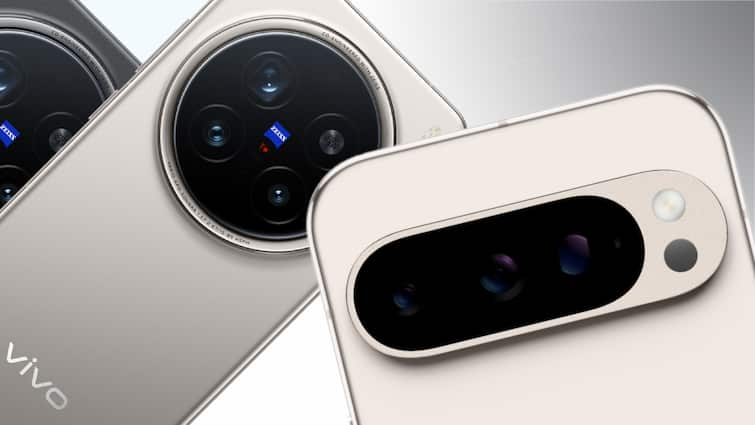
Deciding between the Pixel 8 and Pixel 7? Before we dive into the biggest differences between the two, I’d be remiss for not mentioning there are better options out there.
The new, $800 Pixel 9, which is $100 more than the Pixel 8, has a brighter screen, bigger battery and a newer processor with more RAM — all characteristics that will help you get more mileage out of it in the long run. But if you want something cheaper, consider the $500 Pixel 8A instead of the $600 Pixel 7.
For one, it’s somehow cheaper than Google’s 2022 flagship through the company’s website. But it also has a brighter screen with a higher refresh rate compared to the Pixel 7, a newer processor and more camera features, like Best Take and Audio Magic Eraser. However, you will be missing out on some features, like the ability to power other devices like earbuds on the back of the phone and the ability to zoom digitally with the camera up to 8x.
Unless you can get a very compelling deal on the Pixel 7 or Pixel 8 that makes them hundreds of dollars cheaper than the Pixel 8A or Pixel 9, it’s probably worth opting for Google’s newer phones instead.
Still, if you’re set on either the Pixel 7 or Pixel 8, it’s important to understand the biggest differences between the two. Most importantly, the Pixel 8 will get seven years of software upgrades, whereas the Pixel 7 will only receive new versions of Android until October 2025 (although it will get security updates until 2027). That alone makes the Pixel 8 a more attractive option, since its software won’t feel out of date anytime soon.
Here’s a closer look at how the Pixel 8 compares to the Pixel 7.
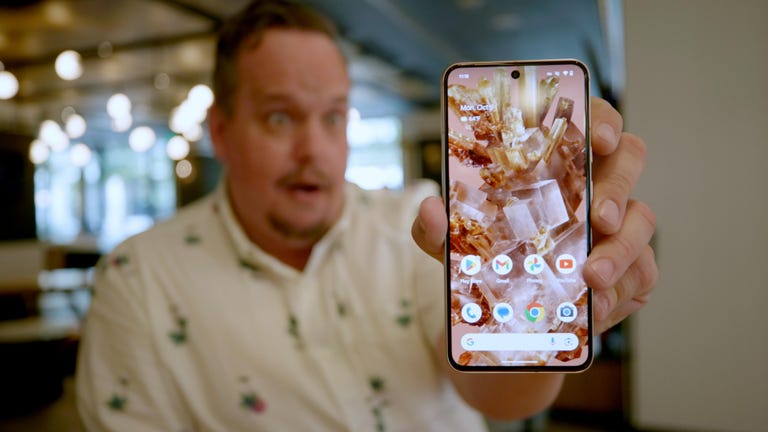
Watch this: Review: We Tested the Google Pixel 8 and Its AI Features
Pixel 8 vs. Pixel 7: Design, display and software
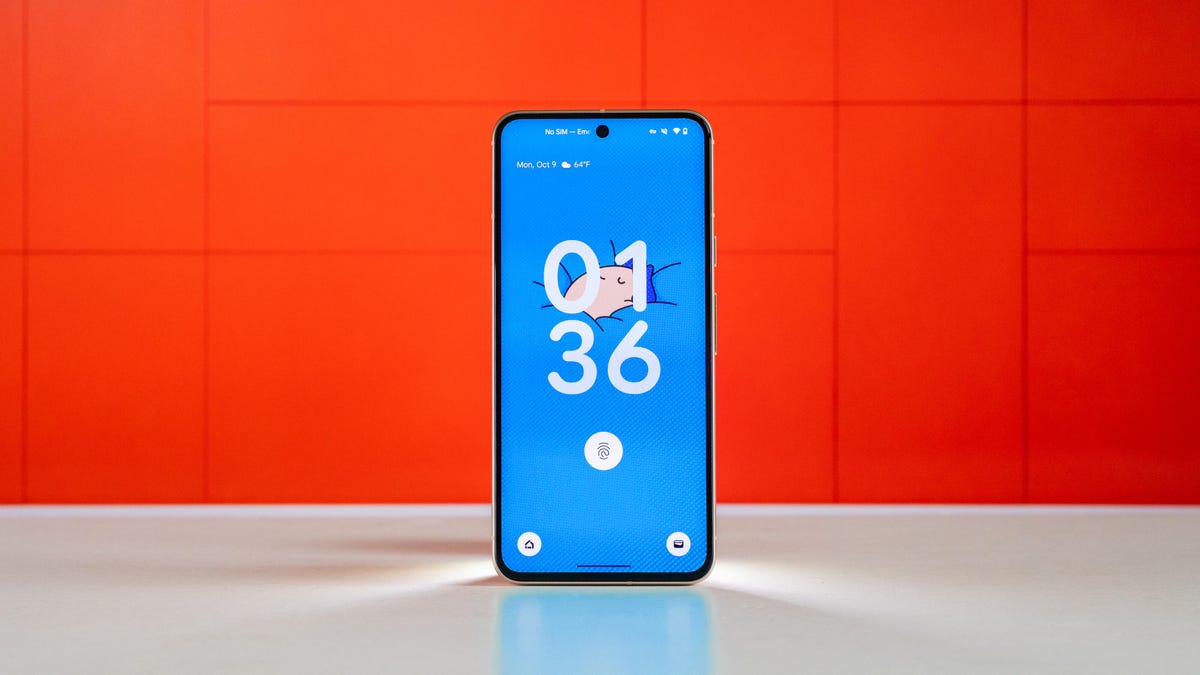
The Pixel 8 comes in hazel, obsidian, mint and rose.
The Pixel 7 and Pixel 8 look and feel similar, with each featuring a glossy back finish and a matte aluminum frame with a bar-shaped camera module that runs horizontally across the device. But the Pixel 8 has flatter edges and weighs less, which along with its more compact size make it easier to hold and use with one hand.
The Pixel 7 is usually available in lemongrass (yellow), snow (white) and obsidian (black) color options, while the newer Pixel 8 comes in hazel (gray), obsidian (black), mint (green) and rose (pink) choices. Both devices are rated for IP68 dust and water resistance, which means they should be dust-tight and able to withstand some water immersion.
Where the Pixel 8 and Pixel 7 start to differ is in their screens. The Pixel 8 has a 6.2-inch display, so it’s slightly smaller than the 6.3-inch Pixel 7. The Pixel 8’s dimensions are also physically smaller than the Pixel 7’s, making it a more ideal choice for those seeking a petite phone.
The Pixel 8’s screen is also brighter since it can peak at 2,000 nits of brightness compared to the Pixel 7’s 1,400 nits. In addition, the Pixel 8 can boost its refresh rate up to 120Hz compared to the Pixel 7’s 90Hz display, although the difference may not be noticeable and depends on what you’re doing on your phone.
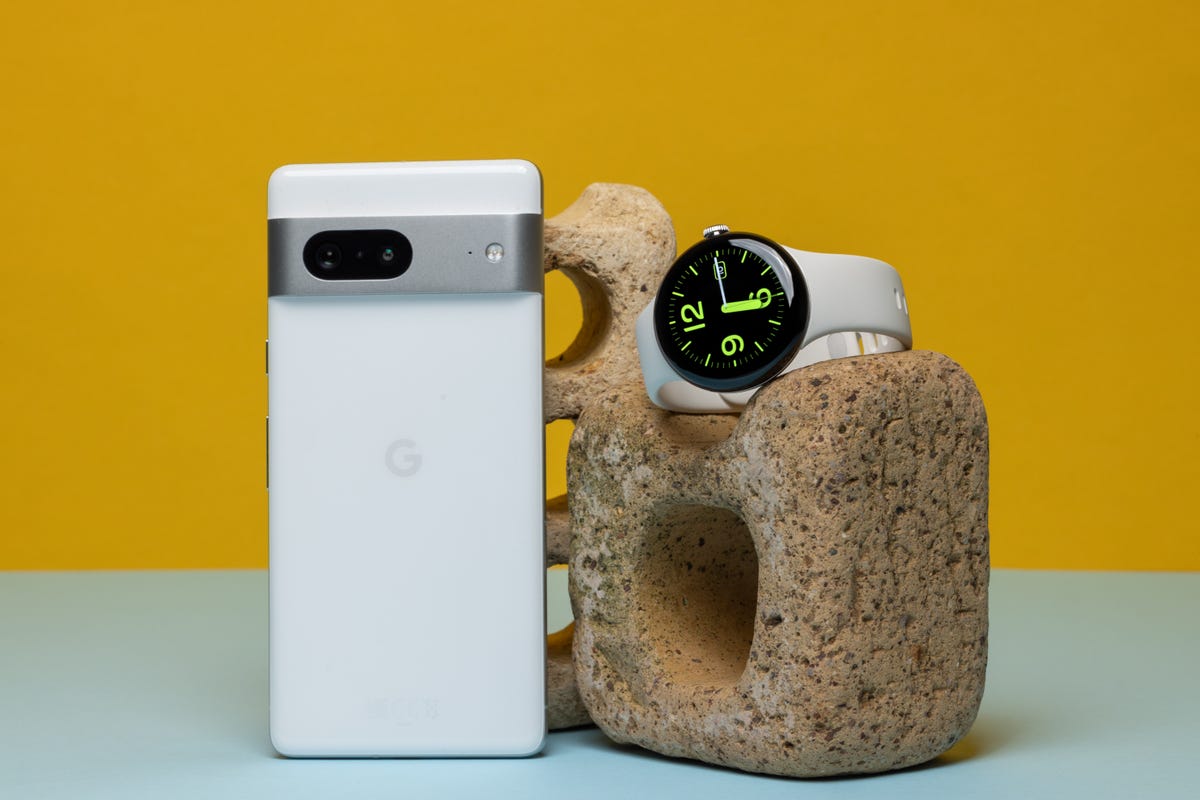
The Pixel 7 pictured next to the Pixel Watch.
Both phones run on Android 14, the current version of Google’s mobile operating system, and will get Android 15. But as mentioned above, the Pixel 8 will get seven years of new Android versions, new Pixel features and security updates. If you want a phone you can hold onto for years to come, the Pixel 8 is the better choice.
While the software experience is largely the same, the Pixel 8 has some extra AI-powered features. The Pixel 8’s Google Assistant is smarter and can summarize web pages. It also sounds more natural when screening incoming calls on your behalf.
Pixel 8 vs. Pixel 7: Camera
On paper, the Pixel 7 and Pixel 8 have similar camera systems. They each have a 50-megapixel main camera and a 12-megapixel ultra wide camera, but the Pixel 8 also has a macro photography mode and a newer sensor that’s more sensitive to light.
The difference is noticeable; photos taken with the Pixel 8’s main camera generally looked a little brighter than those shot on the Pixel 7. And some shots looked more colorful too.
In the images of my colleague Bridget Carey below, which I shot using Night Mode in a dimly lit room in the CNET offices, the Pixel 8 did a better job at capturing the purple lighting more accurately. However, her face does look a bit noisy in the Pixel 8’s photo.
Pixel 8
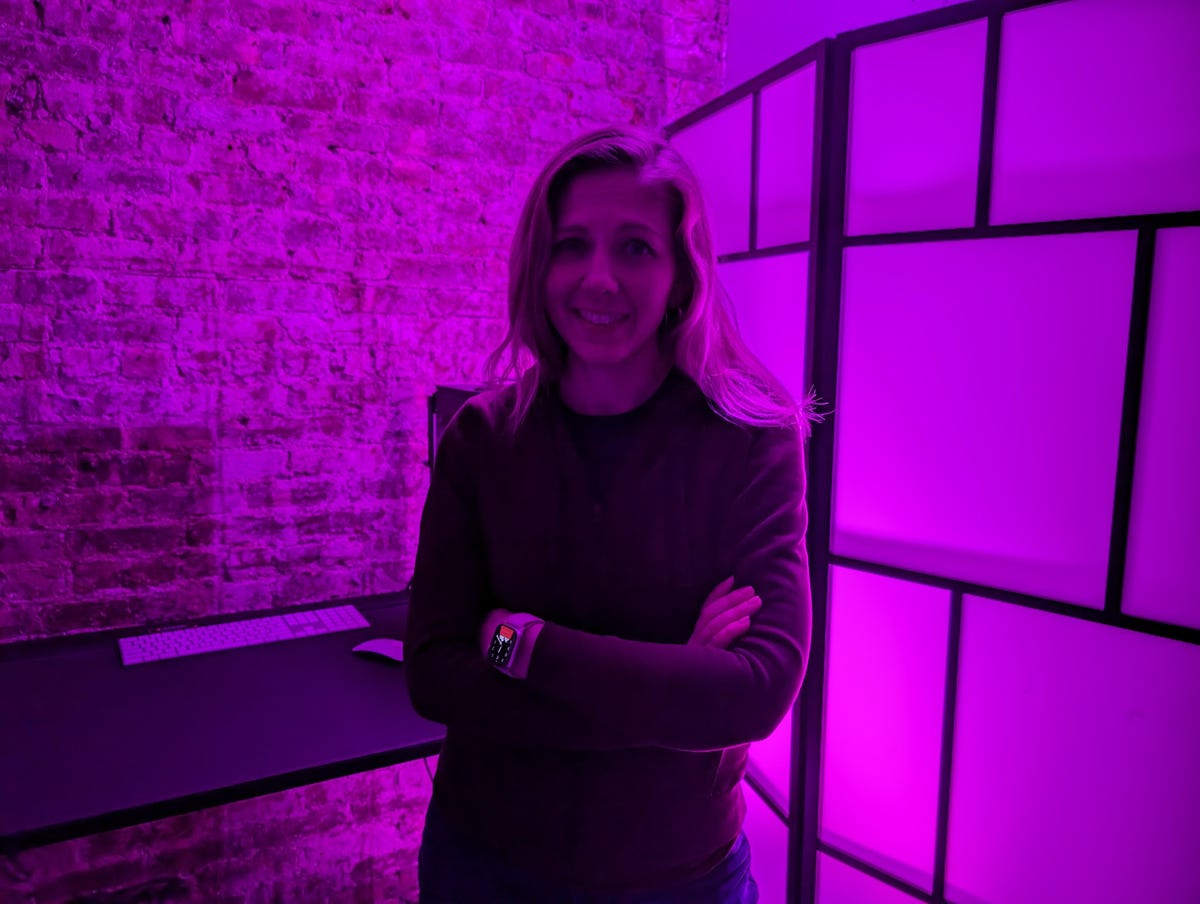
A photo of CNET’s Bridget Carey taken on the Pixel 8.
Pixel 7
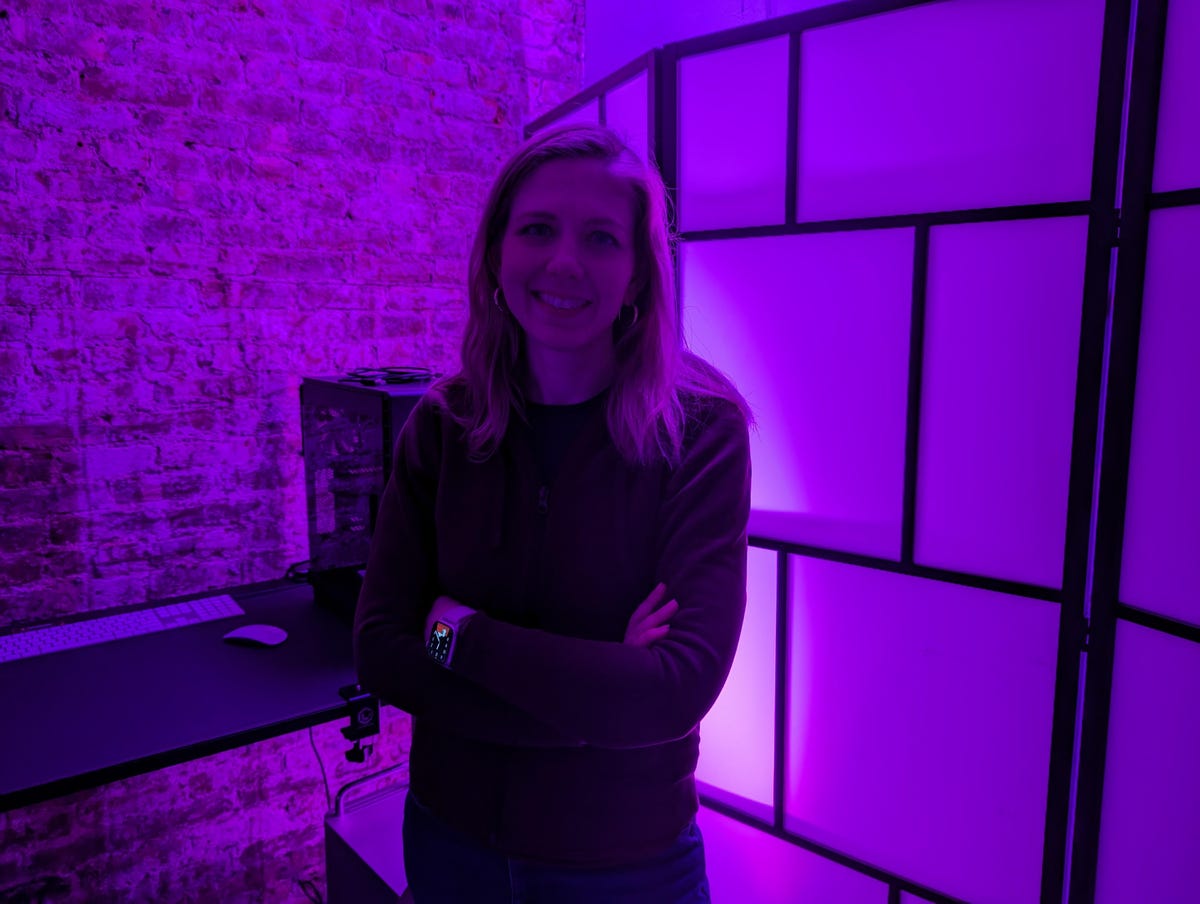
A photo of Bridget taken on the Pixel 7.
While photos generally looked the same between both phones, the Pixel 8’s images sometimes looked slightly more colorful. Take a look at the photos of the fish market in Wegmans below, and you’ll notice the reddish color in the fish’s scales looks a little bolder, especially in the tail.
Pixel 8

A photo of fish at a market taken on the Pixel 8.
Pixel 7

A photo of fish at a market taken on the Pixel 7.
Macro mode also makes it easier to capture closeup details on the Pixel 8. The photo of an artificial flower below was taken on the Pixel 8 in macro mode, and below it you can see the same photo without macro mode taken on the Pixel 7.
Pixel 8
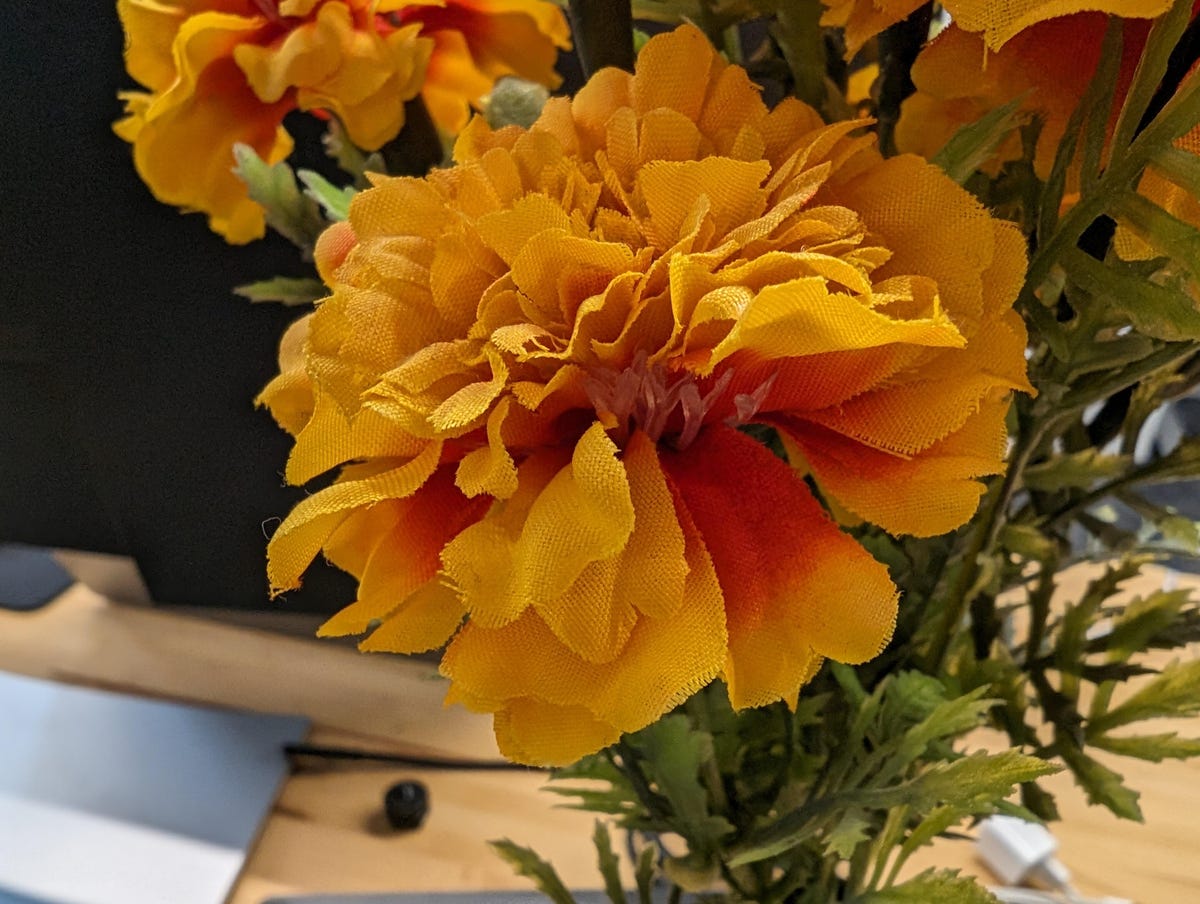
Macro mode on the Pixel 8.
Pixel 7
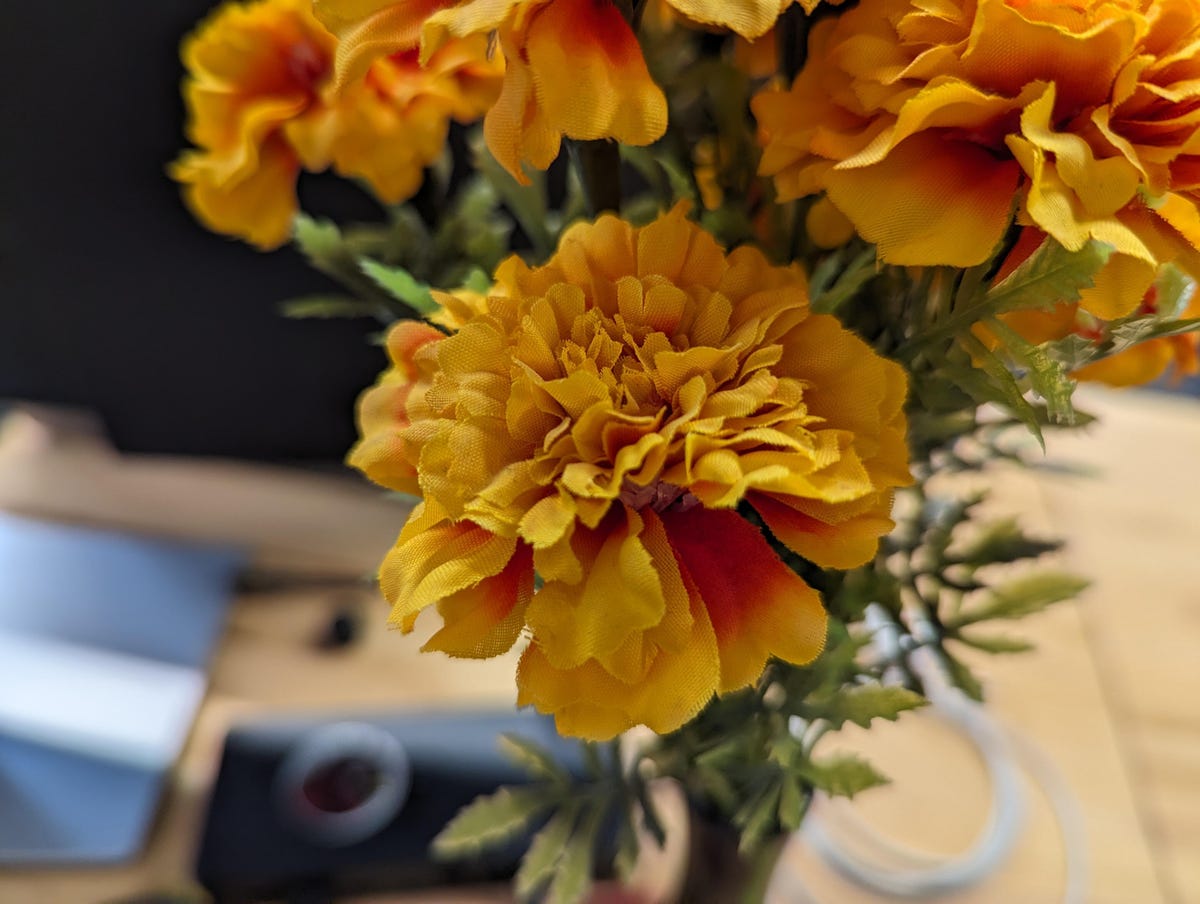
The Pixel 7 doesn’t have macro mode.
My colleague Patrick Holland, who reviewed the Pixel 8, also said photos looked generally similar between both devices. However, he did notice more shadow detail in the Pixel 8’s photos when looking closely, which you can see in his review.
The bigger difference between the two phones comes down to their photo and video editing features. The Pixel 8 has a couple of AI-powered editing tools that aren’t available on the Pixel 7, like Best Take and Audio Magic Eraser. The former lets you change a person’s expression in a group photo after you’ve taken a bunch of shots, while the latter reduces distracting background noise in videos. Magic Editor, which lets you move, erase or resize objects in photos, initially launched on the Pixel 8 series but later came to other Pixel models, including the Pixel 7.
Best Take is meant for moments when you can’t get everyone smiling or keeping their eyes open in a group photo at the same time. While it works impressively well and I can see the appeal behind it, Best Take also feels a little inauthentic to me. It’s easy enough to ignore this feature if you don’t want to use it, but it doesn’t feel as practical as previously introduced photo editing tools like the Magic Eraser and Face Unblur.
The photo below was edited with Best Take. CNET’s Jessica Fierro (left) and Abrar Al-Heeti (right) weren’t smiling in the original image.
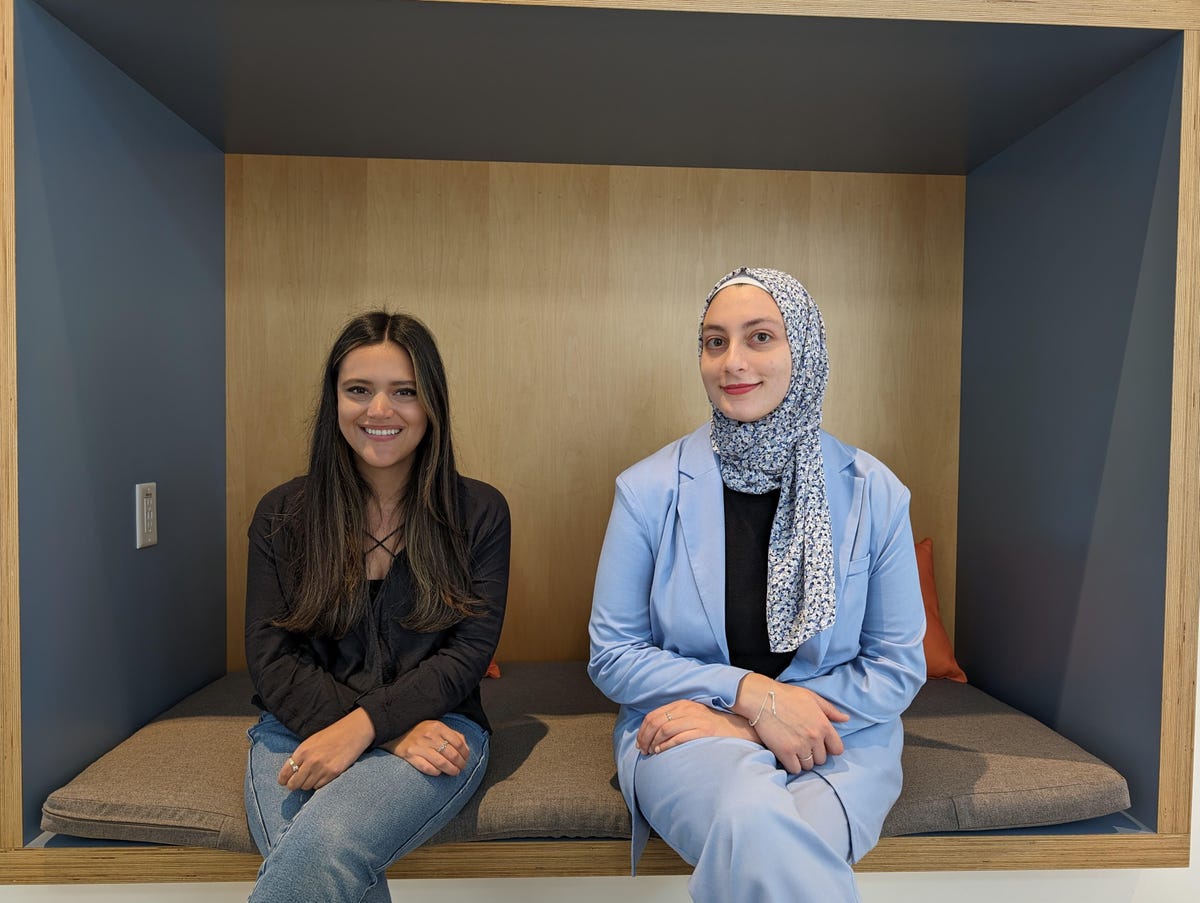
This photo never happened as it appears. CNET’s Patrick Holland used Best Take to mix and match Jessica’s and Abrar’s expressions.
Overall, the cameras on both phones are similar enough, although the Pixel 8’s generally feels like a small step up.
Pixel 8 vs. Pixel 7: Performance and battery
The Pixel 8 runs on Google’s 2023 processor, the Tensor G3, while the older Tensor G2 powers the Pixel 7. Both phones are responsive enough when scrolling around the operating system, swiping through social media posts, launching apps and the camera and playing games. The newer chip’s benefits really kick in when it comes to those AI-powered features mentioned earlier.
I also ran two benchmarks on each phone: one for testing general performance in everyday use (Geekbench 6) and another for measuring graphics power (3DMark Wild Life Extreme). In both tests, the Pixel 8 scored higher, especially on 3DMark Wild Life Extreme, as you can see in the table below.
Geekbench 6 Pixel 8 vs. Pixel 7
Geekbench 6 (single core) 1,605 1,481Geekbench 6 (multicore) 4,134 3,971
3DMark Wild Life Extreme
3DMark Wild Life Extreme 2,381 1,711
3DMark Frames Per Second
Frames Per Second 14.3 10.3
Both phones offer roughly the same battery life, even though the Pixel 8 has a slightly higher battery capacity. The Pixel 8 and Pixel 7 can each last for around a day on a single charge, and they performed very similarly during CNET’s three-hour battery test. During this test, we stream a YouTube video with the screen brightness turned up to its maximum level for three hours and note the battery percentage at each hour.
Despite its brighter screen, the Pixel 8 delivered results that almost matched those of the Pixel 7.
Pixel 8 vs. Pixel 7 battery test
| Pixel 8 | Pixel 7 | |
|---|---|---|
| 1 Hour | 95% | 95% |
| 2 Hours | 88% | 88% |
| 3 Hours | 79% | 81% |
Pixel 8 vs. Pixel 7: Which should you choose?
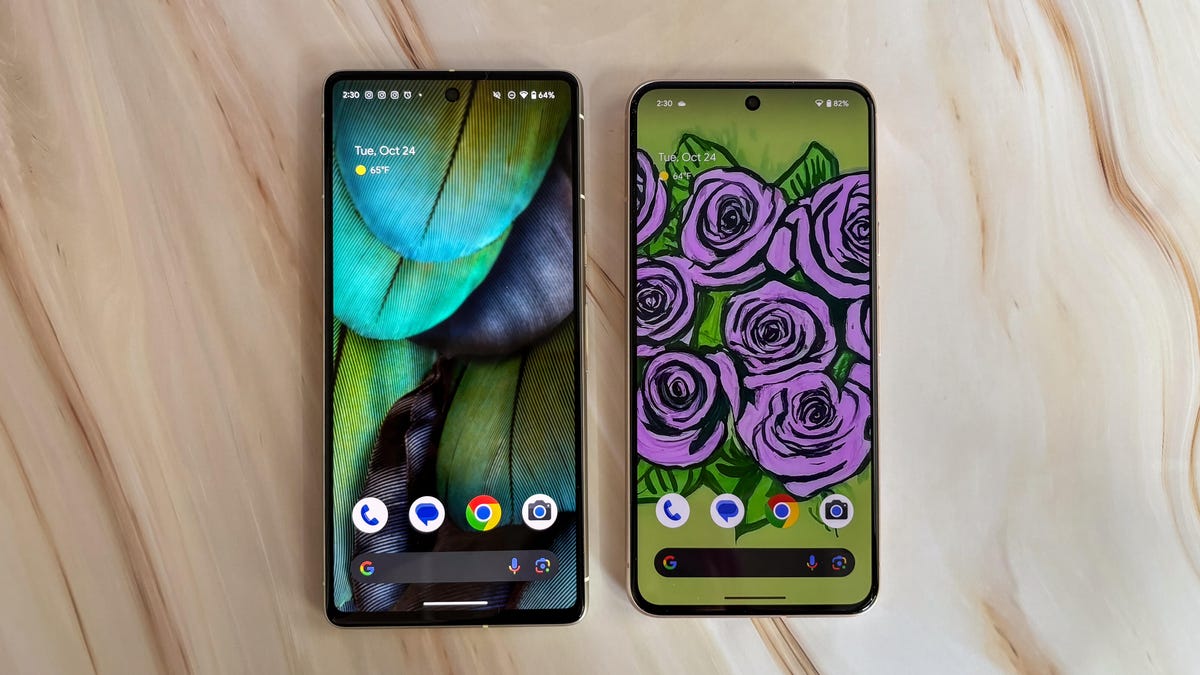
The Pixel 8 is a better investment overall for the simple reason that it will last longer. Its modest camera and display improvements are a step up, and the Pixel 8’s new AI features make it a bit smarter and therefore more convenient to use than the Pixel 7. But it’s really the long software support that makes the Pixel 8 the better choice. However, keep in mind that the Pixel 8A is a better choice for those considering the Pixel 7 as a cheaper alternative to the Pixel 8. And the Pixel 9’s hardware improvements will likely enable it to last longer than the Pixel 8 over the long term.
Google Pixel 8 vs. Pixel 7
| Google Pixel 8 | Google Pixel 7 | |
|---|---|---|
| Display size, tech, resolution, refresh rate, brightness | 6.2-inch OLED; 2,400×1,080 pixels; 60-120Hz adaptive refresh rate | 6.3-inch OLED; 2,400×1,080 pixels; 90Hz |
| Pixel density | 428 ppi | 416 ppi |
| Dimensions (inches) | 5.9 x 2.8 x 0.4 in. | 6.13 x 2.88 x 0.34 in. |
| Dimensions (millimeters) | 150.5 x 70.8 x 8.9 mm | 155.6 x 73.2 x 8.7 mm |
| Weight (grams, ounces) | 187g (6.6 oz.) | 197g (6.9 oz.) |
| Mobile software (at launch) | Android 14 | Android 13 |
| Camera | 50-megapixel (wide), 12-megapixel (ultrawide) | 50-megapixel (wide), 12-megapixel (ultrawide), |
| Front-facing camera | 10.5-megapixel | 10.8-megapixel |
| Video capture | 4K | 4K |
| Processor | Google Tensor G3 | Google Tensor G2 |
| Storage and RAM | 8GB + 128GB, 256GB | 8GB + 128GB, 256 GB, |
| Expandable storage | None | None |
| Battery | 4,575 mAh | 4,355 mAh |
| Fingerprint sensor | Under display | Under display |
| Connector | USB-C | USB-C |
| Headphone jack | None | None |
| Special features | 5G (Sub 6, mmWave); VPN by Google One; 7 years of OS, security and Feature Drop updates; front-facing camera has autofocus; 13W Qi wireless charging; 30W wired charging; USB-3.2 speeds via USB-C; IP68 dust and water resistance; Gorilla Glass Victus 2 on front and back | 5G, Magic Eraser, Photo Unblur, Real Tone, Face Unblur, Long Exposure Mode, Action Pan; Hold For Me, Wait Times, Direct My Call Live Translate |
| US price off-contract | $699 (128GB) | $600 |
| UK price | £575 (128GB) | £599 |
| Australia price | AU$1,100 (128GB) | AU$999 |
link


